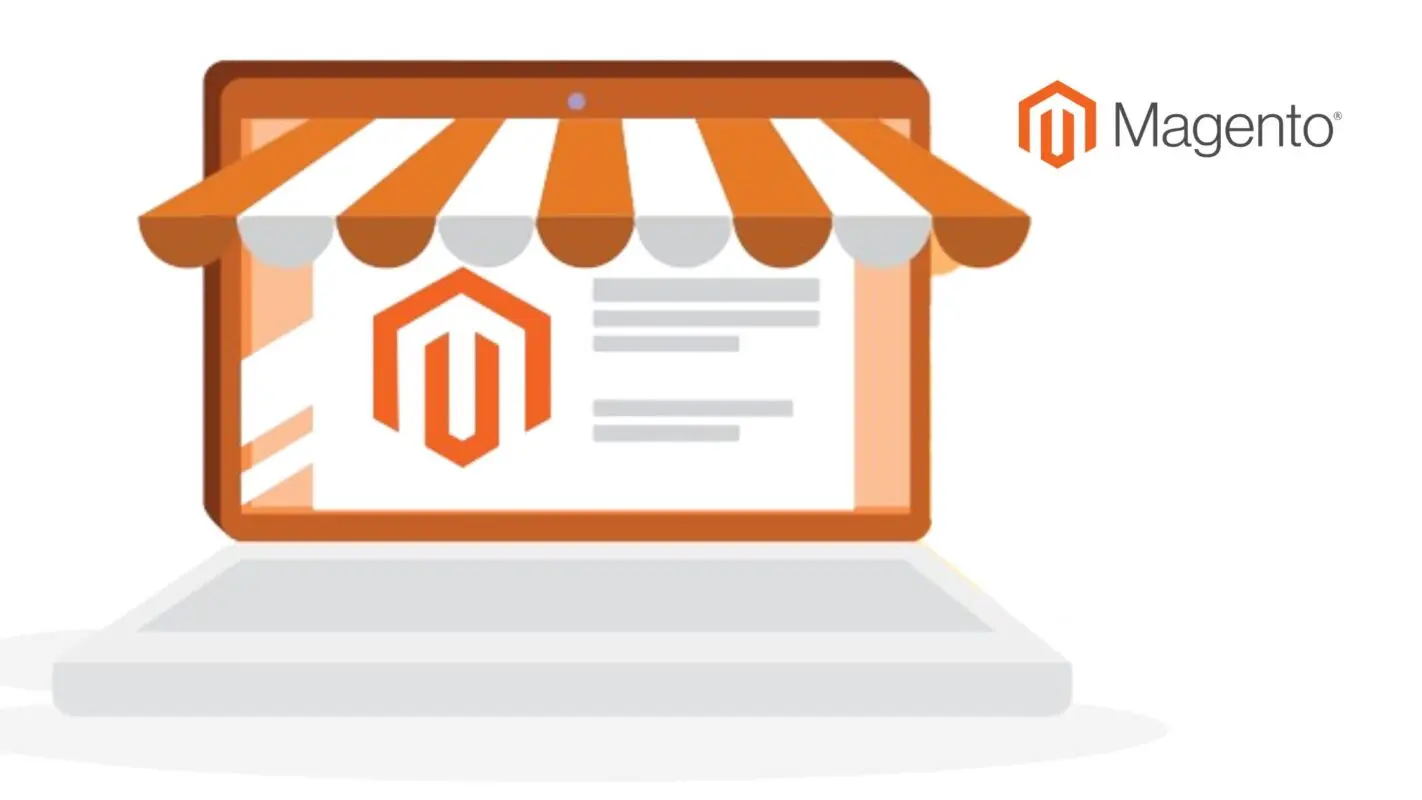E-commerce Security in 2025: Safeguarding Your Store Across Platforms

As the digital marketplace expands and evolves, e-commerce security remains one of the top priorities for online businesses. In 2025, with the increasing sophistication of cyber threats and the growing complexity of online ecosystems, securing your online store isn’t just about installing a firewall—it’s about creating a resilient, multi-layered defense strategy. In this blog, we’ll dive deep into the current trends, best practices, and emerging technologies that are shaping the future of e-commerce security. We’ll also discuss how businesses can protect their digital assets across various platforms while seamlessly integrating modern web development practices. Whether you’re looking to create business website solutions, need to hire web developers, or are on the lookout for an ecommerce web designer to elevate your security posture, this comprehensive guide is for you.
Table of Contents
- Understanding the E-commerce Security Landscape
- Key Threats and Challenges in E-commerce
- Emerging Trends in E-commerce Security for 2025
- Multi-Platform Security: Overcoming Integration Challenges
- Implementing Best Practices for a Secure Online Store
- The Role of Technology and Innovation
- Hiring the Right Experts for Your Secure Online Business
- Future Outlook: Preparing for Tomorrow’s Cyber Threats
- Conclusion and Next Steps
Understanding the E-commerce Security Landscape
The Digital Transformation Era
The evolution of e-commerce has led businesses to expand their digital footprint across multiple channels—from web platforms to mobile applications and social media. This rapid digital transformation necessitates a robust security strategy to protect customer data, financial transactions, and brand reputation. With a proliferation of cyber-attacks and data breaches reported annually, maintaining security is no longer optional. Businesses today must adopt innovative security measures that scale with their growth and technology.
Current State of E-commerce Security
Recent studies and reports, including insights from cybersecurity experts at IBM, Verizon, and Cybersecurity Ventures, have shown a significant uptick in security breaches targeting e-commerce platforms. Attack vectors such as phishing, ransomware, API vulnerabilities, and supply chain compromises are increasingly common. For instance, the IBM X-Force Threat Intelligence Index has noted that ransomware attacks are becoming more sophisticated, targeting both large enterprises and small online stores alike.
Moreover, the rapid shift toward cloud-based platforms and mobile commerce has expanded the attack surface. Many online businesses are integrating complex technologies—ranging from web application development to advanced data analytics—to enhance user experience. However, with greater functionality comes increased risk, making it imperative for business owners to continuously update their security protocols.
Key Threats and Challenges in E-commerce
Cyber Threat Landscape
Cyber threats are evolving at a breakneck pace, and 2025 is expected to bring even more advanced techniques from cybercriminals. Some of the most pressing threats include:
- Phishing and Social Engineering Attacks: Cybercriminals use sophisticated phishing campaigns to trick users into divulging sensitive information.
- Ransomware: Attacks that lock businesses out of their own systems until a ransom is paid have become increasingly common.
- API Vulnerabilities: As businesses increasingly rely on APIs for third-party integrations, vulnerabilities in these connections can expose sensitive data.
- DDoS Attacks: Distributed Denial-of-Service (DDoS) attacks can cripple an online store’s operations by overwhelming servers with traffic.
- Supply Chain Attacks: Cybercriminals target vendors and partners as a weak link to infiltrate more secure systems.
Regulatory Compliance and Data Privacy
Another significant challenge is regulatory compliance. Governments worldwide are enacting stricter data protection laws, such as the GDPR in Europe and the CCPA in California, requiring businesses to implement robust data privacy measures. Non-compliance can lead to heavy fines and reputational damage, making it essential for online stores to prioritize data protection.
Complexity in Multi-Platform Security
Many e-commerce platforms now operate across multiple channels—websites, mobile apps, social media, and even IoT devices. This multi-platform approach, while offering greater customer engagement, also creates new entry points for cyber threats. Ensuring consistent security measures across all platforms is critical, as vulnerabilities in one channel can compromise the entire ecosystem.
Emerging Trends in E-commerce Security for 2025
1. Zero Trust Architecture
The traditional model of network security—assuming that everything inside the corporate firewall is safe—is no longer effective. The Zero Trust model, which operates on the principle of “never trust, always verify,” is gaining traction. This approach requires strict identity verification for every user and device attempting to access resources, regardless of their location. Implementing zero trust can significantly reduce the risk of data breaches by limiting lateral movement within the network.
2. AI and Machine Learning in Cybersecurity
Artificial Intelligence (AI) and Machine Learning (ML) are transforming how businesses detect and respond to threats. In 2025, AI-driven security systems will become standard, capable of identifying anomalous patterns and stopping cyber-attacks before they cause damage. These intelligent systems continuously learn from new threats, ensuring that security measures evolve alongside emerging attack vectors. For instance, AI algorithms can analyze vast amounts of data in real-time, providing actionable insights that help prevent breaches.
3. Multi-Factor and Biometric Authentication
As password-based authentication becomes increasingly vulnerable, multi-factor authentication (MFA) and biometric solutions are emerging as vital components of a secure e-commerce infrastructure. Combining something the user knows (password) with something the user has (smartphone or token) or something inherent (fingerprint, facial recognition) significantly enhances security. Many online stores are already adopting MFA, and in 2025, the integration of biometric authentication will become more widespread.
4. Blockchain for Transaction Security
Blockchain technology, best known for its role in cryptocurrencies, offers promising applications for e-commerce security. By providing a decentralized and tamper-proof ledger, blockchain can secure financial transactions and verify the integrity of data exchanges. This technology can help prevent fraud and ensure that sensitive information remains uncompromised. In the future, we may see more online stores leveraging blockchain not only for payments but also for verifying supply chain authenticity.
5. Enhanced API Security
APIs are essential for integrating various services within an e-commerce platform. However, they also represent potential vulnerabilities if not properly secured. In 2025, there will be an increased emphasis on developing and implementing robust API security protocols. Techniques such as rate limiting, strict authentication, and regular security audits will help protect APIs from exploitation.
6. Cloud-Native Security Solutions
With the majority of e-commerce platforms moving to the cloud, traditional on-premises security measures are becoming obsolete. Cloud-native security solutions that are specifically designed for virtualized environments are on the rise. These solutions offer real-time monitoring, automated threat detection, and rapid response mechanisms, making them essential for protecting modern online stores.
7. IoT Security Considerations
The Internet of Things (IoT) is not just limited to smart home devices; it extends into the realm of retail as well. Connected devices such as smart sensors, digital kiosks, and inventory management systems are increasingly part of the e-commerce ecosystem. Securing these devices against cyber threats is paramount, as a breach in one IoT component can lead to vulnerabilities across the entire network.
Multi-Platform Security: Overcoming Integration Challenges
The Need for Cross-Platform Security
In today’s digital world, online businesses cannot rely solely on a single platform to reach their customers. The integration of websites, mobile apps, and even physical devices has created a complex network of interconnected systems. This multi-platform environment requires a holistic security strategy that addresses vulnerabilities at every touchpoint.
Strategies for Cross-Platform Integration
- Unified Security Policies: Develop consistent security policies that apply across all platforms. This means ensuring that every component—whether it’s a web application or a mobile app—meets the same stringent security standards.
- Regular Vulnerability Assessments: Conduct comprehensive vulnerability assessments across all platforms. This helps identify weak points and allows for timely remediation.
- End-to-End Encryption: Use robust encryption protocols for data in transit and at rest. This is especially crucial when sensitive customer information is shared across different platforms.
- Integrated Threat Intelligence: Leverage centralized threat intelligence platforms that collect and analyze data from various sources. This enables businesses to detect and respond to threats more effectively.
- Continuous Monitoring and Incident Response: Implement continuous monitoring systems that can quickly identify and isolate any security incidents. Having a well-defined incident response plan is critical in minimizing damage during a breach.
By addressing cross-platform security challenges, businesses can protect their digital ecosystem holistically, ensuring that every component of their online store is secure.
Implementing Best Practices for a Secure Online Store
Security by Design
Security should be integrated into every phase of the development process rather than being treated as an afterthought. This “security by design” philosophy ensures that vulnerabilities are identified and addressed early in the development cycle. For example, when you create business website solutions or engage in website and application development, incorporating security measures from the start can save significant time and resources in the long run.
Regular Software Updates and Patching
Keeping software, plugins, and other digital tools up-to-date is one of the simplest yet most effective ways to protect your e-commerce site. Cybercriminals often exploit known vulnerabilities in outdated systems, so regular updates and patches are essential.
Data Encryption and Secure Payment Gateways
Encrypting sensitive customer data—especially during transactions—is critical. Utilizing secure payment gateways and adhering to PCI DSS (Payment Card Industry Data Security Standard) guidelines not only builds trust with your customers but also minimizes the risk of financial data breaches.
Employee Training and Awareness
Human error remains one of the weakest links in cybersecurity. Regular training and awareness programs can help your team recognize phishing attempts, social engineering scams, and other common tactics employed by cybercriminals.
Implementing Multi-Factor and Biometric Authentication
As mentioned earlier, integrating multi-factor authentication (MFA) and biometric security measures can add an extra layer of protection to your online store. These methods significantly reduce the likelihood of unauthorized access and provide a seamless yet secure user experience.
Securing APIs and Third-Party Integrations
With many online stores relying on APIs for essential functions, implementing rigorous API security measures is crucial. Use authentication tokens, encryption, and regular audits to ensure that third-party integrations do not become an entry point for attackers.
The Role of Technology and Innovation
Leveraging AI and Machine Learning
Artificial Intelligence and Machine Learning are at the forefront of the next generation of security technologies. AI-powered security systems can analyze data patterns in real-time, detect anomalies, and even predict potential breaches before they occur. By adopting these technologies, businesses can shift from reactive to proactive security measures, ensuring a more robust defense against evolving threats.
Blockchain for Enhanced Trust
Blockchain technology offers a decentralized and immutable ledger, making it a powerful tool for verifying transactions and ensuring data integrity. In 2025, more online stores are expected to integrate blockchain solutions—not just for processing payments but also for securing supply chains and verifying the authenticity of products. This trend can significantly reduce fraud and bolster customer confidence in your platform.
Cloud-Native Security Innovations
As more businesses migrate to cloud infrastructures, cloud-native security solutions are evolving rapidly. These innovations include automated threat detection, real-time security analytics, and scalable defense mechanisms that adapt to the dynamic nature of cloud environments. Implementing these tools is critical for online businesses that rely on cloud-based platforms for their operations.
The Emergence of Quantum-Resistant Cryptography
While still in its early stages, the development of quantum-resistant cryptographic algorithms is on the horizon. These advanced encryption methods will protect data against the eventual threat posed by quantum computing, ensuring that even the most sensitive information remains secure in the long term.
Hiring the Right Experts for Your Secure Online Business
Building a Security-Focused Team
No matter how advanced your technology, human expertise remains essential in defending against cyber threats. Building a team with the right mix of skills—from front end web developer expertise to seasoned application developers—is crucial. When security is integrated into the design and development process, the entire ecosystem benefits.
Why You Should Invest in Specialized Talent
- Expert Shopify Developers and Shopify Expert Developer: For businesses that rely on Shopify, hiring specialized talent can ensure that your store’s security is optimized. These professionals understand the nuances of the platform and can implement security features that align with industry best practices.
- Hire Web Developers and Hire Website Developers: It’s essential to work with professionals who have experience in web application development and can address security concerns from the ground up. Whether you’re building a brand-new platform or revamping an existing one, experienced web developers can design robust systems that safeguard your online store.
- Ecommerce Web Designer and Website Designer Hire: A secure online store also requires a seamless user interface. Hiring a skilled ecommerce web designer or opting for freelance website designers can enhance both the aesthetics and security of your site. Good design practices often incorporate secure coding practices and can improve the overall user experience.
- Hire Designer and Hiring a Designer: In today’s competitive digital landscape, creative talent is just as important as technical expertise. When you hire designer services, you’re not only getting a visually appealing website—you’re investing in a design that complements your security architecture.
- Freelance Web Developers and Website Freelance Developers: Flexibility is key in today’s fast-paced environment. Many businesses are turning to freelance web developers and website freelance developers who offer specialized skills on-demand. This approach can be particularly useful for projects that require rapid deployment of advanced security features.
- Cool Ecommerce Websites and Ecommerce Site Design: The modern consumer expects both innovation and security. By focusing on cool ecommerce websites and incorporating advanced ecommerce site design principles, you can ensure that your online store stands out in both aesthetics and functionality.
- Website Design and SEO Services: A well-designed website that is also optimized for search engines can boost your online presence while maintaining robust security measures. Integrated services that cover both website design and SEO services ensure that your digital strategy is holistic.
Integrating Security into Your Hiring Process
When planning your next project—whether you’re looking to make app for website or engage in comprehensive website and application development—it’s crucial to integrate security considerations into every hiring decision. Look for professionals who have a proven track record in implementing secure coding practices, are updated with the latest industry trends, and have experience working with modern security frameworks.
Future Outlook: Preparing for Tomorrow’s Cyber Threats
The Evolving Threat Landscape
The cyber threat landscape is continuously evolving. As businesses innovate and adopt new technologies, cybercriminals are simultaneously developing more sophisticated attack methods. In the coming years, we can expect to see:
- Increased Ransomware Sophistication: Ransomware attacks will become more targeted, leveraging AI to identify the most vulnerable aspects of a business’s infrastructure.
- AI-Driven Cyber Attacks: Just as AI is being used to bolster defense, it will also be harnessed by cybercriminals to develop new forms of attacks.
- The Rise of Quantum Computing Threats: Although quantum computing is still emerging, its eventual impact on cryptography will require businesses to adopt quantum-resistant measures.
- Expanded Attack Surface: With the growing number of connected devices and integrated platforms, every new digital innovation introduces potential vulnerabilities that must be proactively managed.
Preparing for the Future
To stay ahead of the curve, businesses must adopt a proactive security strategy that anticipates and mitigates future threats. This involves investing in ongoing research, adopting new technologies early, and continuously training your team on the latest security practices. Collaboration with industry experts, participation in cybersecurity forums, and leveraging threat intelligence platforms will all play a crucial role in preparing your business for the challenges of tomorrow.
Conclusion and Next Steps
E-commerce security in 2025 is set to be defined by the integration of advanced technologies, the adoption of proactive strategies, and the relentless pursuit of excellence in safeguarding digital assets. By understanding the current landscape, anticipating future threats, and implementing robust security measures, businesses can create a resilient online presence that protects both their assets and their customers.
To summarize, here are the key takeaways:
- Holistic Security Strategy: Embrace a multi-layered security approach that covers every aspect of your digital ecosystem—from web applications to mobile platforms and IoT devices.
- Adopt Emerging Technologies: Leverage AI, blockchain, and cloud-native solutions to build a forward-thinking security framework.
- Prioritize Continuous Monitoring and Training: Stay vigilant with regular vulnerability assessments, software updates, and employee training.
- Invest in Specialized Talent: Whether you’re looking to hire web developers, hire website developers, or find expert shopify developers, building a team of skilled professionals is essential for maintaining robust security.
As you plan your next steps—be it expanding your online store or embarking on a comprehensive redesign—it’s crucial to integrate these security trends and best practices. By doing so, you not only protect your business from potential threats but also build trust with your customers, ensuring long-term success in a competitive digital marketplace.
Additional Resources
For further reading and to stay updated on the latest trends in e-commerce security, consider exploring these authoritative resources:
- IBM X-Force Threat Intelligence Index: Detailed analysis of emerging cyber threats and trends.
- Verizon Data Breach Investigations Report: Comprehensive annual report on data breaches and security incidents.
- Cybersecurity Ventures: Insights into the economic impact of cybercrime and future predictions.
- National Institute of Standards and Technology (NIST): Guidelines and best practices for securing information systems.
These studies and reports provide invaluable insights that can help shape your security strategy and ensure that your online store remains resilient in the face of evolving threats.
Final Thoughts
The world of e-commerce is more dynamic and interconnected than ever before. As we move further into 2025, the fusion of innovative technologies with strategic security practices will be the cornerstone of a successful online business. By understanding the evolving threat landscape and leveraging the latest trends in cybersecurity, you can build a secure, user-friendly, and resilient platform that stands the test of time.
Whether your focus is to create business website solutions, engage front end web developer expertise, or even hire designer professionals for a visually appealing and secure design, the key is to integrate security into every facet of your digital operations. From web application development to website design and SEO services, a secure foundation is essential for achieving long-term success.
Invest in continuous learning, update your security protocols regularly, and collaborate with experts—from freelance web developers to website freelance developers—to ensure that your business is well-equipped to handle the challenges of tomorrow. With a comprehensive, forward-thinking approach, you can not only protect your online store from cyber threats but also build a competitive advantage in an ever-evolving digital landscape.
Embrace the future of e-commerce security and take proactive steps today to secure your online business across all platforms. The journey may be challenging, but the rewards—trust, reputation, and sustained growth—are well worth the effort.






